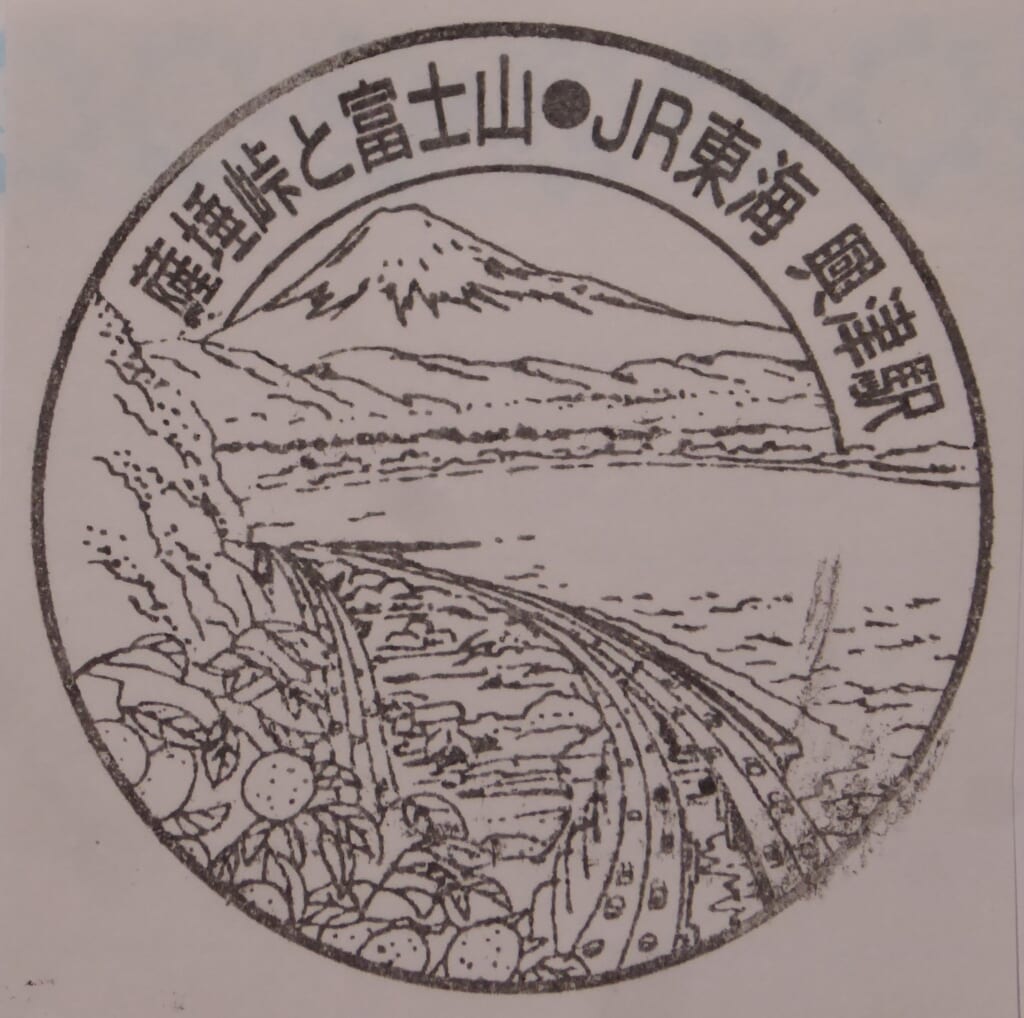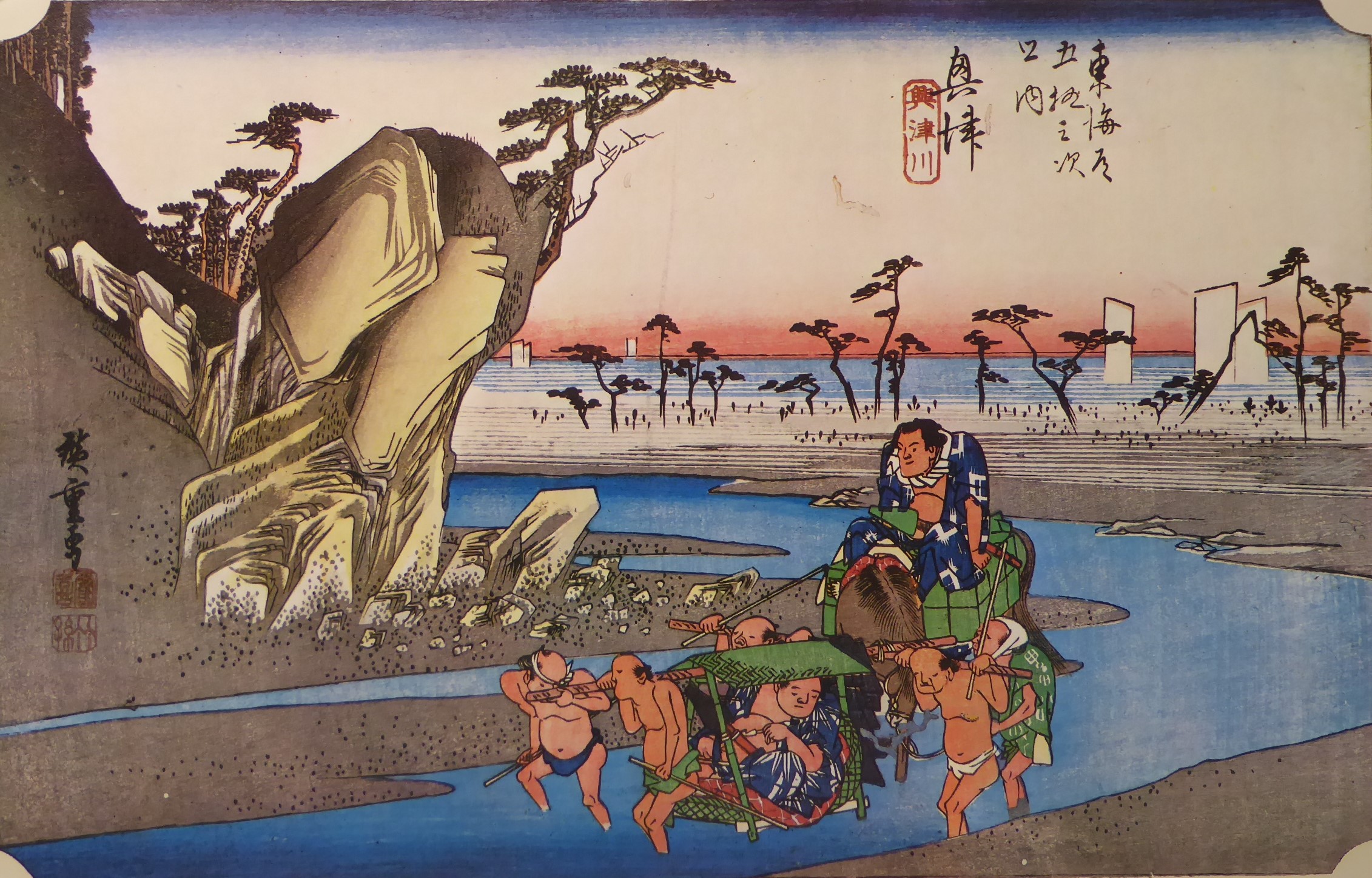Explanation of the Fifty-three Stations of the Tokaido 18 Okitsu
4.1km from Ejiri to Okutsu 35°02′59.4″N 138°31′10.4″E
Okutsu is the 17th station on the Fifty-three Stations of the Tokaido.
It is a small post town with 2 Honjin inns, 2 Wakihonjin, 34 lodgings, a population of 1,668, 316 houses, and a streetscape of about 1,150m long.
Okitsu is the name of a place in Shimizu Ward, Shizuoka City, Shizuoka Prefecture.
The seaside around here has been called Kiyomigata since ancient times, and has been famous as a utamakura (poem of poetry).
The place name Okitsu is said to come from the fact that Okitsushimahime-no-mikoto, one of the deities enshrined at Okitsu Munakata Shrine, settled here.
The Okitsu clan, a branch of the Irie clan, have lived here since the end of the Heian period, and so the area was named after them.
The hills around Okitsu-juku are close to the coast, making it a good location for monitoring and blocking east-west traffic, and in ancient times, Kiyomi-seki was built there to prevent suspicious people from entering from the east.
Known for its scenic beauty, Kiyomi-gata was the site of Kiyomi-seki and Okitsu stations in ancient times.
In this case, Okitsu is different from the current Okitsu, and is around Yokosuna, which is to the west.
After the Meiji period, with the opening of the railway, villas were built for statesmen such as Saionji Kinmochi, and the area is known nationwide as a winter resort.
Currently, the coastal area of Kiyomi-gata has been reclaimed, and is now the Okitsu Pier at Shimizu Port.
Local produce includes paper, radishes, carp, and sweet potatoes. The Okitsu River is the first river in eastern Japan to open for sweetfish fishing.
It is a key transportation hub where the Koshu Okan (Minobu Kaido) that leads to Minobu and Kofu branches off.
It also functioned as a pilgrimage route and a salt road.
If you visit the Okitsu Zagyoso, which was restored in 2004, you can get a close-up feel of the atmosphere of those days.
① “Hoeido version”
It depicts the journey of two sumo wrestlers crossing the Okitsu River.
You can see Miho no Matsubara in the background.
Beyond that is the square white sail of a boat.
Two sumo wrestlers are crossing the Okitsu River.
One is riding in a palanquin carried by four laborers, and the other is riding a horse.
The laborers and horses are struggling with the weight of the wrestler.
The wrestler is hanging off the horse.
The four palanquin carriers look stern as they consider the weight of the wrestler.
In the Edo period, sumo was called kanjin sumo. ,
It was held with the permission of the temple and shrine magistrate to raise money for donations and restoration costs for shrines and temples.
②”Gyousyo version”
The view from Kiyomigaseki.
A traveler on horseback stops his horse and looks at the view.
③ “Reisho version”
The main focus is on a sailing ship.
A view of Mt. Fuji and Seikenji Temple from the perspective of the sea.
④ “Hokusai version”
A traveler is traveling beside the Okitsu River.
⑤ “Travel image”
JR Okitsu.
⑥ “Stamp image”
A stamp from JR Okitsu Station.
Hoeido version
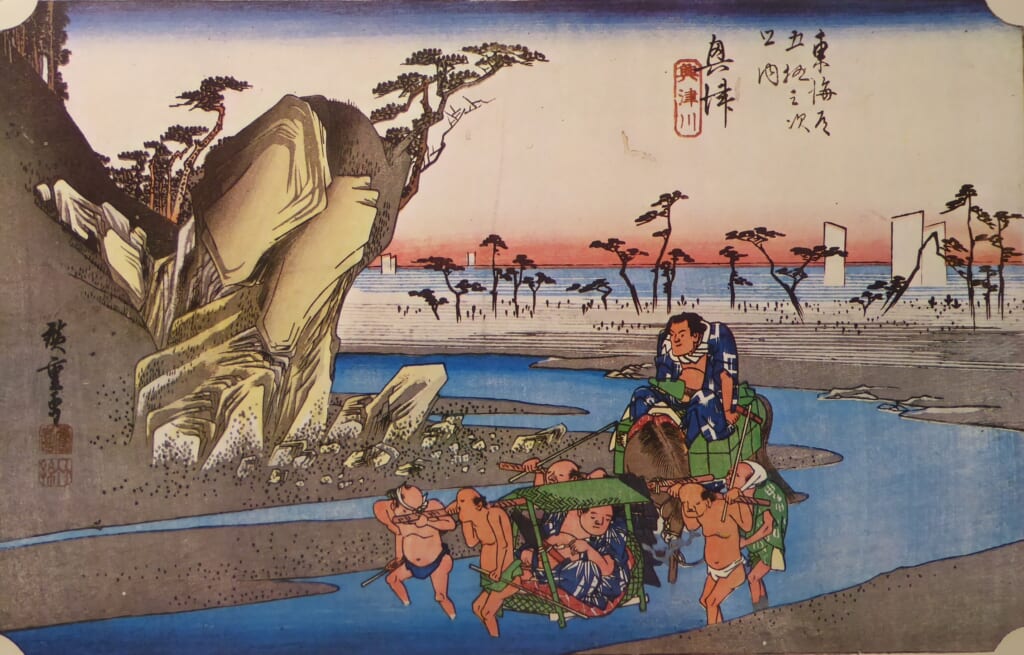
Gyousyo version
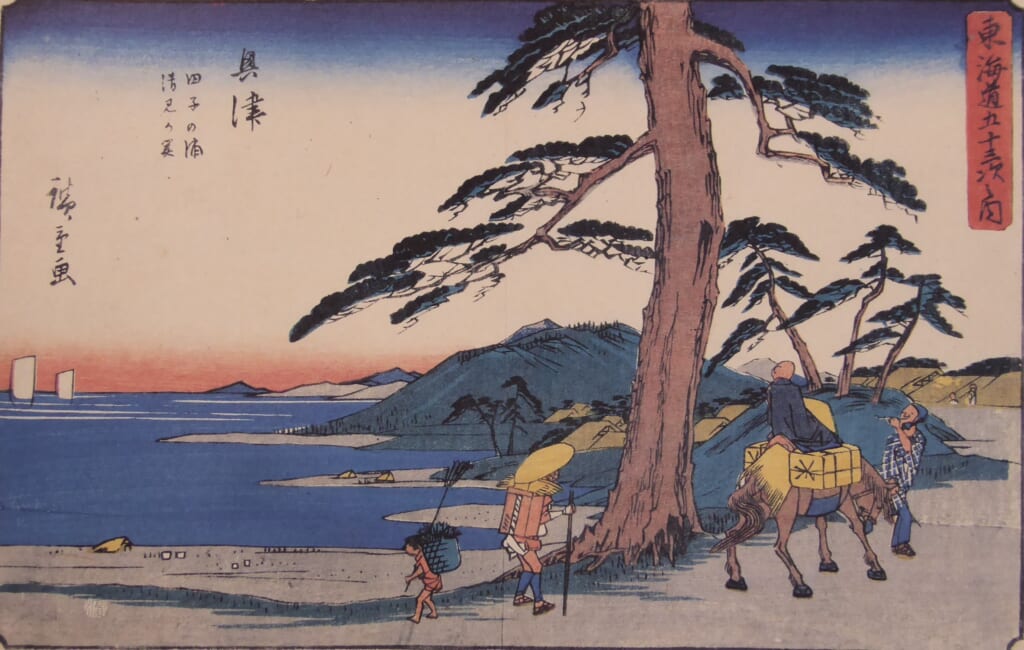
Reisho version
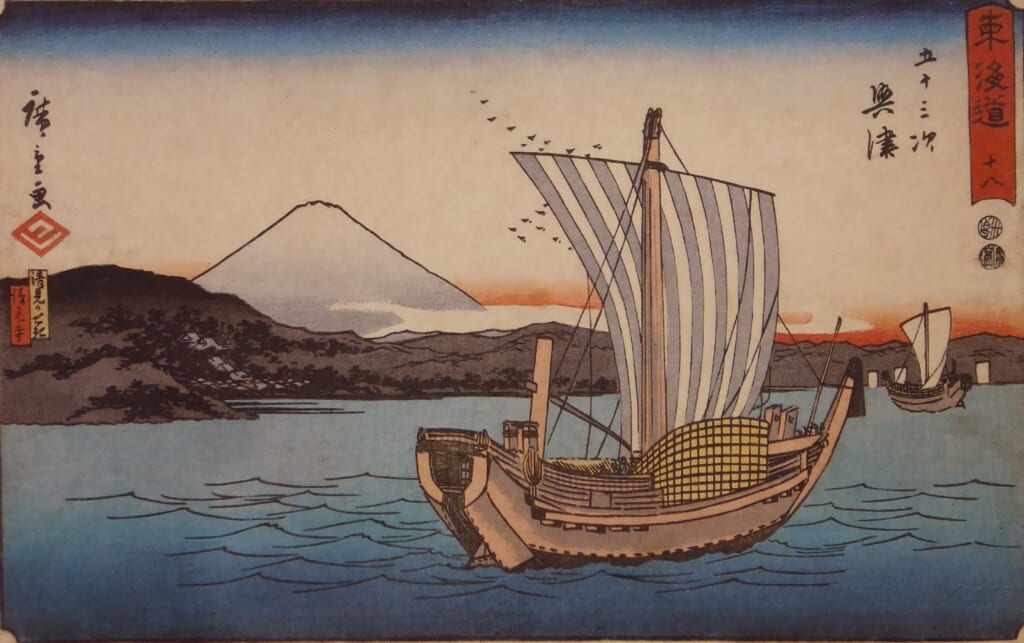
Hokusai version
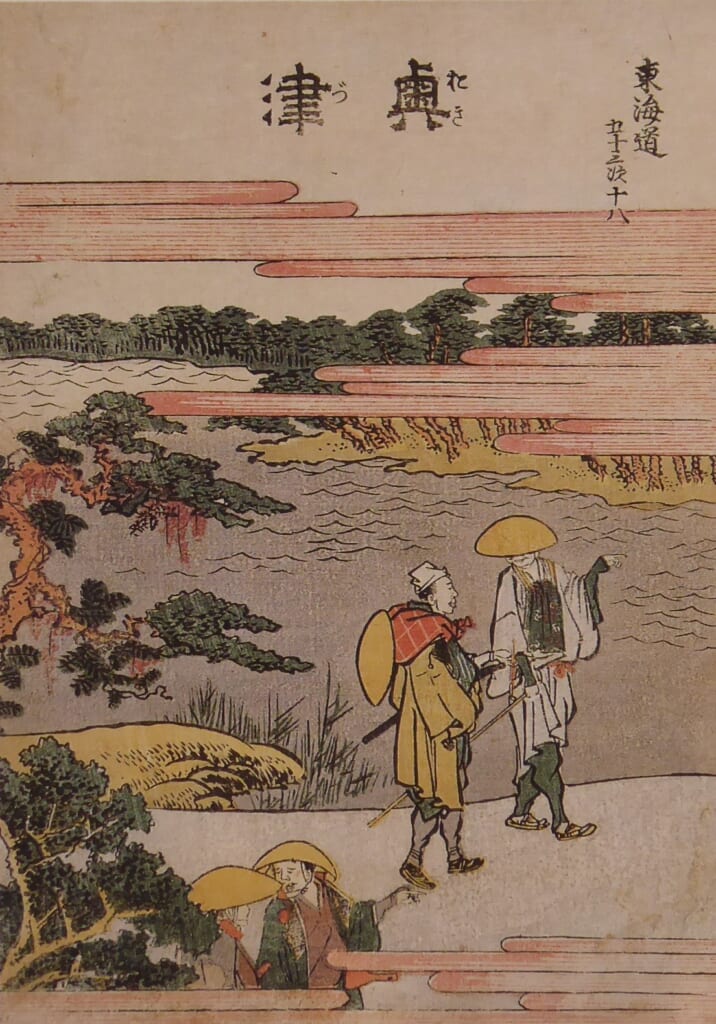
Travel image

Stamp image
